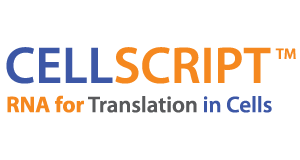Optimizing dsRNA Removal in IVT mRNA: Strategies for Enhanced Translation and Reduced Immunogenicity
Double-stranded RNA (dsRNA) is a well-recognized byproduct of in vitro transcription that poses significant challenges for the use of synthetic mRNA in research and therapeutic applications. Even trace amounts of dsRNA can suppress protein translation and trigger unwanted innate immune responses, underscoring the importance of effective removal strategies.
This webinar will discuss how dsRNA arises during transcription, its downstream effects on translation and immunogenicity, and the practical impact it has on mRNA-based applications. Data will be presented for several mitigation approaches—including T7 polymerase variants, chromatography-based purification, and RNase III digestion—highlighting their strengths and limitations. The results demonstrate that reducing dsRNA not only lowers interferon signaling but also improves the overall translational yield of the mRNA. Finally, it will conclude with a perspective on how these strategies, particularly RNase III treatment in conjunction with nucleoside modifications (e.g., pseudouridine or N¹-methylpseudouridine), can be combined to produce high-quality, low-immunogenic mRNA suitable for therapeutic use. Ultimately, the decision as to which method to implement should be guided by the consistency of removal across production runs and the required tolerance for dsRNA in the final product.
Join this webinar to learn how to dramatically increase your mRNA translation for success in cells while virtually eliminating immunogenicity.
Learning Objectives:
1. Understand the origins of double stranded RNA (dsRNA) impurities in in vitro transcription and why they drive unwanted innate immune activation.
2. Evaluate and compare leading strategies to minimize or remove dsRNA, such as engineered T7 RNA polymerases, selective enzymatic digestion, and affinity purification, and recognize the limitations of each.
3. Learn how combining chemical modifications with orthogonal purification and enzymatic tools can yield high-quality, low-immunogenicity mRNA suited for therapeutic applications.


